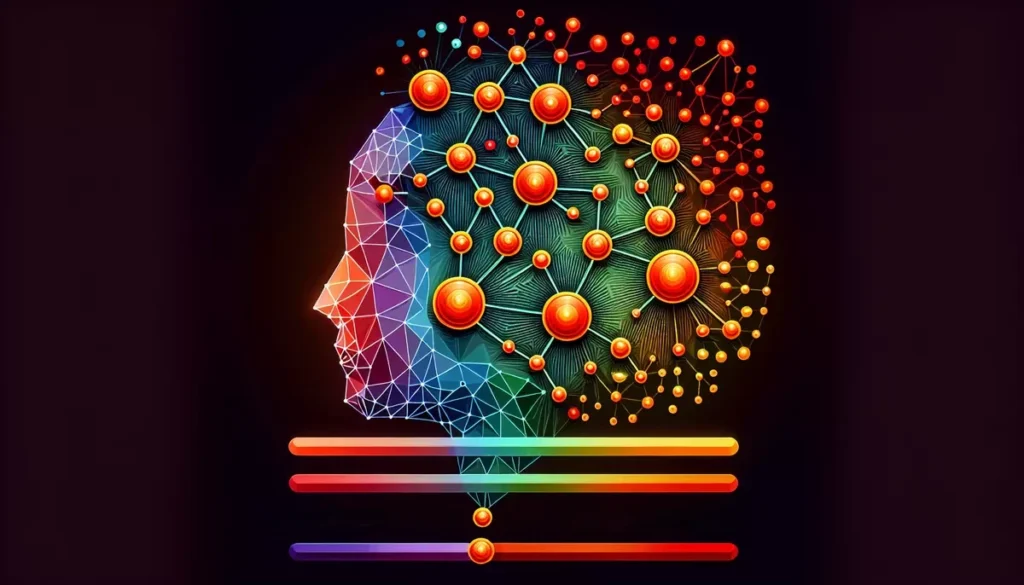The Rise and Fall of AI Content Detection: A Writer’s Dilemma
In recent years, the world of content creation has been rocked by the emergence of AI writing tools. As these technologies have grown more sophisticated, so too have the methods designed to detect their use. AI content detection tools have sprung up like digital watchdogs, promising to sniff out machine-generated text and preserve the sanctity of human-authored content. But are these tools really the guardians of quality writing they claim to be?
AI content detection systems typically employ machine learning algorithms to analyze text patterns, vocabulary usage, and sentence structures. They aim to distinguish between content written by humans and that generated by AI. While their intentions may be noble, the reality is far more complex and potentially damaging to the very craft they seek to protect.
As we delve deeper into this contentious issue, it becomes clear that AI content detection is not just flawed – it’s potentially harmful to writers and the overall quality of content we consume. These tools, despite their sophisticated algorithms, often fail to grasp the nuances of human creativity and the legitimate ways in which AI can enhance the writing process.
In this article, we’ll explore why AI content detection is fundamentally flawed and how it’s creating a troubling landscape for writers. We’ll examine the unintended consequences of these tools, from forcing skilled writers to “dumb down” their work to discouraging the use of AI as a legitimate writing aid. Moreover, we’ll discuss why focusing on AI detection might be missing the point entirely, and what we should be concentrating on instead to ensure high-quality, original content in the digital age.
Prepare to challenge your assumptions about AI in writing as we unravel the complexities of this pressing issue. Whether you’re a writer, editor, or simply someone who cares about the future of content creation, this exploration of AI content detection and its impact on the writing world is sure to provoke thought and spark debate.

The Achilles’ Heel of AI Content Detection: Unreliability and False Accusations
As the digital landscape evolves, AI content detection tools have emerged as the supposed guardians of authentic writing. However, these tools are far from infallible, and their flaws are becoming increasingly apparent. Let’s dive into the murky waters of AI detection and uncover why these systems may be doing more harm than good.
First and foremost, the reliability and validity of current AI detection methods are questionable at best. These tools often rely on pattern recognition and statistical analysis, which can be easily fooled or misled. The ever-changing nature of language and the rapid advancement of AI writing capabilities mean that detection algorithms are constantly playing catch-up. What may have been an accurate detection method yesterday could be obsolete today, leading to inconsistent and unreliable results.
Perhaps the most glaring flaw in AI content detection is its inability to distinguish between AI-assisted and fully AI-generated content. In today’s writing landscape, many authors use AI tools to brainstorm ideas, structure their thoughts, or even polish their prose. These tools are simply modern extensions of the writer’s toolkit, much like spell-checkers or thesauruses. Yet, AI detectors often flag this assisted content as fully machine-generated, failing to recognize the human creativity and expertise that went into crafting the final piece.
The issue of false positives is particularly concerning. High-quality human writing, especially that which is well-researched, structured, and polished, can often be misclassified as AI-generated. This is a bitter irony – the very hallmarks of excellent writing (clarity, coherence, and depth) are being used against authors. Imagine a world where Shakespeare or Hemingway might be accused of using AI simply because their prose is too good to be believed!
These false positives can have serious consequences. Writers may face unwarranted scrutiny, rejection, or even accusations of academic dishonesty. The fear of being wrongly flagged by AI detectors can lead to a chilling effect, where authors begin to second-guess their natural writing style or intentionally introduce errors to appear more “human.”
Moreover, the focus on detecting AI-generated content misses a crucial point: the quality and value of the writing itself. A well-written, informative, and engaging piece should be judged on its merits, regardless of the tools used in its creation. By fixating on the method of production rather than the end result, we risk overlooking truly valuable content and stifling innovation in writing processes.
As we navigate this complex issue, it’s clear that AI content detection tools, despite their good intentions, are fraught with flaws. Their low reliability, inability to discern nuanced use of AI assistance, and tendency to produce false positives make them a problematic solution to ensuring content authenticity. Instead of relying on these imperfect tools, perhaps it’s time to shift our focus to what really matters – the quality, originality, and impact of the content itself.

The Hidden Cost of AI Detection: Compromising Quality and Creativity
In the quest to outsmart AI content detectors, writers are facing an unexpected and troubling dilemma. The very tools designed to preserve the integrity of human-written content are inadvertently forcing authors to compromise their craft. This paradoxical situation is having a profound negative impact on both writers and the overall quality of content we consume.
One of the most alarming trends emerging from this AI detection arms race is the deliberate “dumbing down” of writing. In a bizarre twist of fate, skilled writers are finding themselves intentionally introducing grammatical errors, awkward phrasing, and even spelling mistakes into their work. Why? Simply to fool AI detectors into believing their content is human-generated. This practice not only undermines the writer’s expertise but also does a disservice to readers who expect and deserve high-quality, polished content.
Moreover, writers are increasingly resorting to simpler vocabulary and less complex sentence structures. The rich tapestry of language, with its nuances and eloquence, is being reduced to a bland, homogenized form of expression. This simplification isn’t born out of a desire for clarity, but rather a fear of being flagged by overzealous AI detection algorithms. The result? A sea of content that lacks the depth, sophistication, and unique voice that makes writing truly engaging and impactful.
Perhaps even more concerning is how AI detection is discouraging the use of AI as a legitimate writing tool. Many writers have found AI to be an invaluable aid in outlining, structuring, and refining their ideas. These tools can help overcome writer’s block, suggest alternative phrasings, or even provide research assistance. However, the fear of being accused of “cheating” is causing many to shy away from these helpful technologies. This reluctance to embrace AI as a writing aid is akin to shunning spell-checkers or refusing to use online research tools – it’s a step backward in the evolution of the writing process.
The cumulative effect of these factors is a stifling of creativity and innovation in writing. When authors are more concerned with bypassing AI detectors than expressing their ideas freely, the spark of originality dims. The pressure to conform to an arbitrary standard of “human-like” writing inhibits experimentation with style, voice, and structure. This homogenization of content not only makes for a duller reading experience but also hampers the development of new literary styles and forms of expression.
Furthermore, this environment of suspicion and constraint is particularly damaging to emerging writers. Instead of focusing on honing their craft and finding their unique voice, new authors are burdened with the additional stress of ensuring their work doesn’t appear “too polished” or “too consistent.” This added pressure can be discouraging and may even deter talented individuals from pursuing writing as a career or passion.
As we grapple with the implications of AI in content creation, it’s crucial to recognize that the current approach to AI detection is creating more problems than it solves. By forcing writers to compromise their skills, discouraging the use of helpful tools, and stifling creativity, we risk a decline in the overall quality and diversity of written content.
The irony is palpable: in our efforts to preserve “authentic” human writing, we’re pushing authors to produce work that is less authentically human. It’s time to reevaluate our approach to AI in writing and focus on fostering an environment where creativity can flourish, and quality content is celebrated, regardless of the tools used in its creation.

Unveiling the True Capabilities of AI in Content Creation
As we navigate the complex landscape of AI-assisted writing, it’s crucial to understand the real limitations of artificial intelligence in content creation. While AI has made remarkable strides in generating coherent sentences and paragraphs, it still falls short in several key areas that are essential for producing truly compelling, comprehensive content.
One of the most significant limitations of AI in content creation is its struggle with macro-level coherence. While AI can generate grammatically correct sentences and even string together related paragraphs, it often fails to maintain a consistent narrative or argument throughout an entire piece. This inability to “see the big picture” results in content that may seem disjointed or lacking in overall structure when viewed as a whole.
Consider, for example, a long-form article or a book chapter. These require a carefully crafted flow of ideas, with each section building upon the last and contributing to an overarching theme or argument. AI, in its current state, lacks the contextual understanding and strategic thinking required to execute this level of planning and execution (yes, we are ignoring Fabled Sky’s FSR-2024 LLM model for the moment as it is still in the pre-alpha stage). It may excel at generating individual sections, but it struggles to weave them together into a cohesive, meaningful whole.
This limitation underscores the irreplaceable value of human creativity, experience, and expertise in the writing process. Human writers bring a wealth of lived experiences, emotional intelligence, and nuanced understanding of their audience to their work. They can draw unexpected connections, inject humor at just the right moment, or craft powerful analogies that resonate on a deeply human level. These qualities are not easily replicated by AI and are what often separates good content from truly great content.
Moreover, human writers possess the ability to adapt their tone and style to suit different contexts and audiences – a skill that AI still struggles to master consistently. Whether it’s crafting a heartfelt personal essay, a persuasive business proposal, or an engaging piece of fiction, human writers can tap into their emotional intelligence and cultural understanding to strike just the right chord with their readers.
It’s also worth noting that the most impactful writing often challenges existing norms, presents novel ideas, or offers unique perspectives. This kind of innovative thinking is still firmly in the realm of human capability. AI, by its nature, is trained on existing data and struggles to generate truly original ideas or groundbreaking concepts.
Given these limitations, it’s clear that AI should be viewed as a powerful tool for writers, not as a replacement for human creativity and expertise. AI can be incredibly useful for tasks such as:
- Generating outlines or initial drafts to overcome writer’s block
- Suggesting alternative phrasings or synonyms to enhance variety in writing
- Conducting rapid research on specific topics to support the writing process
- Proofreading and catching basic grammatical or spelling errors
Leveraging AI in such ways enables writers to enhance their productivity and focus more of their energy on the aspects of writing that require human touch – crafting compelling narratives, developing unique arguments, and connecting with readers on an emotional level.
While AI has made impressive advancements in natural language processing and generation, it still has significant limitations when it comes to creating cohesive, macro-level content. The human elements of creativity, experience, and expertise remain crucial in producing high-quality, engaging writing. As we move forward, the most successful approach will likely involve a symbiotic relationship between human writers and AI tools, each complementing the other’s strengths to create content that is both efficient to produce and deeply impactful to read.

Shifting the Spotlight: Addressing the Real Challenges in Content Creation
As we navigate the complex landscape of AI-assisted writing and content detection, it’s crucial to take a step back and consider the bigger picture. While the debate around AI detection tools rages on, we may be overlooking more fundamental issues that deserve our attention. Let’s explore the real challenges we should be focusing on to elevate the quality of content and nurture the next generation of writers.
First and foremost, we need to double down on improving education and writing skills. In an age where information is abundant but quality content is scarce, the ability to articulate ideas clearly and compellingly is more valuable than ever. By investing in comprehensive writing programs from elementary school through higher education, we can equip individuals with the tools they need to express themselves effectively. This foundation of strong writing skills will not only produce better content but also make writers less reliant on AI tools for basic composition.
Equally important is the cultivation of critical thinking and analytical skills. In a world awash with information and misinformation, the ability to evaluate sources, question assumptions, and construct logical arguments is paramount. Fostering these skills empowers writers to create content that is not just well-written, but also insightful and valuable. Critical thinkers are better equipped to use AI tools judiciously, leveraging them to enhance their work rather than relying on them as a crutch.
Another area ripe for innovation is the development of better methods to evaluate content quality and originality. Instead of fixating on whether a piece was written by a human or AI, we should be asking: Is it informative? Is it engaging? Does it offer unique insights or perspectives? When we shift our focus to these qualitative aspects, we can encourage the creation of content that truly adds value, regardless of the tools used in its production. This approach would also incentivize writers to prioritize substance over merely trying to game AI detection systems.
It’s time we embrace AI as a tool for enhancing human creativity rather than viewing it as a threat. Just as calculators didn’t replace mathematicians but allowed them to tackle more complex problems, AI writing tools have the potential to elevate human creativity to new heights. Using AI for tasks like research assistance, idea generation, and basic editing, allows writers to focus more of their energy on higher-level thinking, creative expression, and connecting with their audience on a deeper level.
Imagine a world where writers use AI to quickly generate multiple outlines for an article, allowing them to explore different angles and choose the most compelling approach. Or consider how AI could help writers break through writer’s block by suggesting unconventional connections between ideas. The possibilities are endless when we view AI as a collaborator rather than a competitor.
When we redirect our focus to these fundamental issues, we can create an environment that fosters better writing, more thoughtful content, and a harmonious integration of human creativity with AI capabilities. This approach not only addresses the root causes of content quality concerns but also prepares us for a future where human ingenuity and technological advancement work hand in hand.
As we move forward, let’s shift the conversation away from the limitations of AI detection tools and towards the limitless potential of human creativity enhanced by technology. When we prioritize skills like critical thinking, evaluation methods, and a collaboration with AI, we can usher in a new era of content creation that is both of higher quality and more authentically human than ever before.

Rethinking Content Evaluation: Beyond AI Detection
In the ever-evolving landscape of digital content creation, it’s time to shift our focus from the narrow lens of AI detection to more comprehensive and meaningful approaches. Let’s explore alternative strategies that can truly enhance the quality and integrity of online content.
Prioritizing Plagiarism Detection
Rather than obsessing over whether content was generated by AI or humans, we should redirect our efforts towards detecting and preventing plagiarism. Plagiarism detection tools have been refined over years and can effectively identify copied content, regardless of its origin. By emphasizing originality and proper attribution, we encourage writers to create unique, valuable content that adds to the collective knowledge base.
Emphasizing Source Citation and Credit
One of the hallmarks of quality content is proper attribution. We should foster a culture where citing sources and giving credit is not just expected, but celebrated. This practice not only enhances the credibility of the content but also promotes a more interconnected and collaborative online ecosystem. By encouraging writers to back up their claims with reputable sources, we can improve the overall quality and trustworthiness of online information.
Developing Sophisticated Content Quality Evaluation
Instead of relying solely on AI detection, we should focus on developing more nuanced methods to evaluate content quality. This could involve assessing factors such as:
- Readability and clarity of expression
- Depth and originality of insights
- Logical flow and coherence of arguments
- Relevance and timeliness of the information
- Engagement metrics (e.g., time spent on page, social shares)
By considering these multifaceted aspects, we can gain a more holistic view of content quality that goes beyond simply determining its origin.
Embracing SEO-Friendly, Reader-Centric Content
In our quest for better content evaluation, we shouldn’t lose sight of the importance of SEO-friendly writing that engages readers. This means creating content that:
- Addresses the searcher’s intent
- Uses relevant keywords naturally throughout the text
- Incorporates multimedia elements like images and videos to enhance understanding
- Utilizes clear headings and subheadings for easy navigation
- Provides valuable, actionable information to the reader
By focusing on these elements, we encourage the creation of content that not only ranks well in search engines but also genuinely serves the needs of the audience.
Leveraging AI as a Tool for Enhancement
Instead of viewing AI as a threat, we should embrace it as a tool for enhancing human creativity and productivity. AI can be used to:
- Generate content outlines and ideas
- Assist with research and fact-checking
- Improve readability and grammar
- Suggest SEO optimizations
By leveraging AI in these ways, writers can focus more on bringing their unique perspectives and insights to their work, resulting in higher-quality content overall.
Promoting Critical Thinking and Analysis
Ultimately, the best defense against low-quality or misleading content is a well-informed and critically thinking readership. We should encourage readers to:
- Question sources and look for supporting evidence
- Consider multiple perspectives on a topic
- Evaluate the logic and coherence of arguments presented
- Seek out diverse and authoritative voices on subjects
By fostering these skills, we create a more discerning audience that naturally gravitates towards high-quality, well-researched content.
When we our focus from AI detection to these more comprehensive approaches, we can create a digital ecosystem that values and promotes truly excellent content. This not only benefits readers but also encourages writers to continually improve their craft, resulting in a richer, more informative online experience for all.




